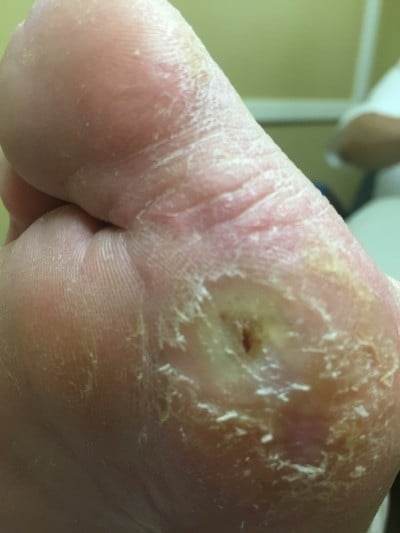
What is a callous?
Treatment of Corns:
Thickened skin on the bottom of your foot is called a corn or a callus. They are the body’s reaction to pressure or friction from walking. They form under pressure points in the bottom of the foot.
Older people, for instance have less fat under their feet as cushion and the skin and bone remaining get a lot of pressure under them which may lead to very painful callosities.
Poorly cushioned or ill- fitting shoes also may make corns worse.
Technically corns are overlying joints , like toes. often they have a deep core , which presses on the nerve underneath
Heloma Dura- or hard corn is often found on top of toes
Heloma Mole- or soft corn can be found between toes, where the tissue is moist. They often appear thick, white , moist and rubbery, and very painful
IPK- or seed corn has a nucleated center of impacted dead skin cells. Often they occur in multiples, which can be painless, however, deep ones can press on nerves in the skin and become VERY painful.
DO NOT
Do not use those medicated black dot “corn pads” from the store- they don’t know the difference between good skin and bad skin, and can cause a wound.
Do not ignore if a corn gets red or pink around it- that could signify an infection starting.
A trained podiatrist can quickly and painlessly remove a callus in the office. She can also teach you how to prevent them with either special creams or offloading padding. oftentimes a simple office procedure can keep the corns from returning. Most importantly, what you think may be “just a corn” can often be something much worse. The skin under the corn can break down, creating an ulcer, which can lead to a diabetic foot infection. This is the beginning of an amputation if not treated quickly enough.
Symptoms and signs
A person may experience the sensation of walking on stones due to corns and calluses. A corn or callus may exhibit the following symptoms:
- A pronounced, brittle bump
- A skin patch that is thick and coarse
- Skin-deep ache or soreness
Before applying home remedies for corns and calluses, anyone with poor circulation, delicate skin, or nerve issues that cause numbness in the foot should also consult their doctor.
Do corns and calluses reappear after they have healed?
Since friction, irritation, and pressure against the skin are the causes of corns and calluses, if the cause is not addressed, the condition may recur at any time. To put it another way, if your shoes were the problem and you continue to wear them, the corns and calluses will probably come back.
Fortunately, with a little tender loving care and attention, most corns and calluses can be properly treated at home. Consult your doctor if you ever have questions about a growth on your foot, are unsure of how to treat it, have diabetes, are prone to infections, or have sensitive skin. The best person to check your feet, inquire about or test for any further medical concerns you might have, treat your feet, and advise you on how to care for them is your doctor.
Is it ever necessary to get surgery for corns and calluses?
Follow the straightforward advice in this article to manage most corns and calluses, including avoiding tight-fitting footwear and using a pumice stone to remove any corns or calluses after bathing your feet in warm water.
If you have a structural issue with your foot or toes that causes corns or calluses to occur repeatedly, surgery can be an option. Your surgeon might need to correct or remove bone tissue in this situation. Other justifications for surgery include excruciating discomfort from the corns or calluses or the inability to walk comfortably or normally as a result of them.

